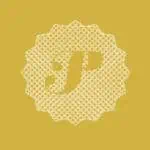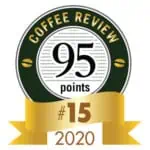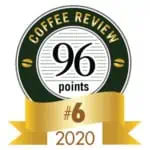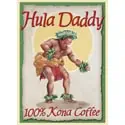Coffee from Hawaii
Courtesy of Kenneth Davids, 21st Century Coffee: A Guide
Coffee has long been produced in the Hawaiian Islands, and coffee from the Kona district in Hawaii has achieved particular fame. Interesting coffees are grown elsewhere in Hawaii.
The total volume of all of these U.S. coffees is less than minuscule by world standards, but they are interesting for the aficionado and student of coffee. First, they represent efforts to succeed with small-volume, high-value coffees in economies with very high labor costs. Second, they are a part of and potentially influenced by the restless, innovating North American and East Asian specialty coffee cultures. The producers, particularly those in Kona, do not always take advantage of the opportunities offered by this intimate overlap with the high-end specialty coffee world, but a few do, with increasingly impressive results.
Click here to view Hawaii coffee ratings and reviews
Hawaii: Kona and Ka’u
Although coffee is produced on all five of the major Hawaiian Islands, the most famous Hawaii coffee is Kona, grown on clusters of small farms stretched along volcanic slopes overlooking the Pacific on the “Big Island” of Hawai’i. The classic Kona coffee, to the degree it can be found today, is a subtly pleasing cup: balanced, quietly complete, gently bright, smooth in mouthfeel, a softer, occasionally more melodious version of classic Central America high-grown wet-processed coffees. By the 1990s this soft, aromatic cup, boosted by tourism-inspired demand and limited supply, made Kona one of the highest-priced coffees in the world.
Kona Blends and Kona Complacency
Perhaps more destructive to quality than pests, local or imported, are the wounds inflicted by the Kona industry on itself. Kona coffee may be the victim of its own success, or at least the success of its name.
All Kona is produced pretty much as most of the world’s great coffees are, by artisan producers on farms that may range from an acre up to 30 or 40 (from under a half-hectare to 12 to 16 hectares). It is picked by hand, usually selectively. The farmers themselves are either local people or fugitives from mainland American cities looking for tropical weather and an interesting way to make (or supplement) a living. So far so good for Kona coffee. This artisan-grown, potentially classic coffee reaches market via two different routes, however.
Along one route, large centralized mills buy the coffee fruit from the small-holding farmers, who bring it to the mill or a collection point in the morning in their pickup trucks. These mills process the coffee using variations on the wet or washed method, often rather carelessly.
The Name Sells, Not the Cup
Why carelessly? Because the Kona name sells the coffee, not the quality of the cup. For example, the most widely available “Kona” coffees sold in Hawaii are Kona blends that, by law, only need to contain 10% actual Kona coffee. Thus the Kona coffee inside these bags exists for only one reason, which is to legally justify the Kona name on the outside of the bag. The rest of the coffee in the bag could be, and is, from anywhere: Central America, Brazil, Colombia. Often these non-Kona blend components are inexpensive, low-quality, even tainted coffees; occasionally they are good coffees, so good that 10% Kona blends sometimes taste better than much more expensive but still carelessly produced 100% Kona coffees. Because, again, the name sells the coffee, regardless of its quality. Finally, there are the “Kona Style” or “Kona Roast” blends that contain no actual Kona coffee whatsoever.
Small Producer Kona Coffees
Relief from this dismal picture is in part provided by those smaller-holding Kona farmers who process their coffees themselves, roast it themselves and sell it to tourists and internet buyers. There is no chicanery here that I know of; these small-holding producers are passionate opponents of the 10% Kona blend phenomenon, and deeply committed to what they are doing.
But the problem again is that the Kona name is enough to sell the coffee, and many of these farmer-retailers are not particularly skilled in coffee processing and even less skilled when it comes to roasting their coffee. Thus a potentially soft, balanced, subtly fragrant Kona is often roasted so dark by these well-meaning farmer-retailers that its understated grace is destroyed and it ends up tasting like an oily, overroasted coffee from anywhere, except that it costs three times as much.
Kona Growing Regions
Kona is traditionally divided into North Kona, a largely deep-soiled district on the slopes above thetown of Kailua-Kona, and South Kona, an area with generally younger soils, or sometimes almost no soil at all: The trees grow out of holes and crevices in partly decayed lava. Both areas can produce fine Kona-style coffees, though for now perhaps give a little overall edge to the older farms and the older soils in North Kona.
Ka’u and Elsewhere on the Big Island of Hawai’i
The newer growing district of Ka’u, southwest of Kona, with its fine, deepsoiled, generally south-facing terroir, produces Kona-style coffees that are less expensive and often better prepared than standard-issue 100% Konas from the big Kona mills.
One boutique small producer, the tiny Rusty’s Hawaiian farm operated by Lorie Obra, has achieved world fame in specialty coffee circles for its meticulous, successful experiments with tree variety and processing method.
A handful of tiny, obsessively managed farms in other parts of the Big Island of Hawai’i also have distinguished themselves, including some in both the Puna and Hamakua districts.
”Other Island” Hawaiis: Maui, Moloka’i, O’ahu, Kaua’i
Small boutique coffee farms are beginning to appear on the other major Hawaiian Islands, particularly in the cool upland region of Maui on the slopes of the mammoth Haleakalā volcano.
But visitors to these other islands — Maui, Moloka’i, O’ahu and Kaua’i — may encounter an entirely different coffee spectacle. In place of small plots of coffee trees shoehorned in among rocks, rusting cars and wooden houses, long, regular lines of coffee trees undulate like gleaming dark-green hedges over low coastal plains where sugar and pineapple once grew. Rather than isolated groups of pickers balancing their way over rocks, ingenious harvesting machines roll across the nearly flat terrain, coaxing ripe cherries off the trees with hundreds of fiberglass rods vibrating through the branches like tireless fingers. The soil is deep and red, and rainfall, less frequent than in regions like Kona or Ka’u, is supplemented by drip-irrigation systems.
These large coffee farms include Ka’anapali Estate on Maui (now MauiGrown Coffee), Malulani Estate on Moloka’i, Waialua Estate on O’ahu, and Kauai Coffee, with an astonishing 3,100 acres (1,250 hectares) of trees on Kaua’i. They are revivals of earlier efforts to grow coffee on a commercial scale on the coastal plains of Hawaii. In the 19th century, these early coffee farms gave way to more profitable sugar and pineapple, and coffee growing survived only in rugged Kona, where the rocky terrain discouraged large-scale agriculture.
Hawaii Coffee Ratings and Reviews
The Hawaii coffee reviews below are listed in reverse chronological order by review date. Only reviews published in the past five years are displayed. Click here to view older reviews of coffees from Hawaii. Older reviews may no longer accurately reflect current versions of the same coffee.
Tropically sweet, floral-driven. Star jasmine, mango, date, macadamia nut, amber in aroma and cup. Sweet-tart structure with gently bright acidity; delicately confident acidity. Resonantly fruit- and floral-toned finish.
Delicate, lyrically sweet, gently tart. Tea rose, pink grapefruit zest, cocoa nib, fresh-cut oak, wild honey in aroma and cup. Sweet structure with gently bright acidity; plush, satiny mouthfeel. The finish consolidates to richly sweet notes of tea rose and honey with cocoa nib undertones.
Deeply, delicately aromatic, high-toned. Strawberry guava, cocoa nib, mandarinquat, brown sugar, hazelnut in aroma in cup. Sweetly tart with bright, balanced acidity; silky, lightly viscous mouthfeel. Flavor-saturated, long, engaging finish.
Juicy-sweet, high-toned, multi-layered. Strawberry guava, star jasmine, hazelnut, amber, cocoa nib in aroma and cup. Brightly sweet-tart structure with vibrant acidity; lively, satiny-smooth mouthfeel. Fruit- and floral-toned finish.
Sweetly savory, complex. Pipe tobacco, date, narcissus, almond, baking chocolate in aroma and cup. Sweet-toned with lively acidity; very full, creamy mouthfeel. The finish centers on notes of date and pipe tobacco.
Deep-toned, sweetly fermenty. Oak barrel, chocolate fudge, raspberry, freesia-like flowers, a hint of rum in aroma and cup. Sweet structure with gentle, round acidity; satiny-smooth mouthfeel. Chocolaty, oak-toned finish with rum undertones.
Deeply sweet, tropical. Pineapple, lychee, baking chocolate, jasmine, lemon verbena in aroma and cup. Sweetly tart with very lively, phosphoric acidity; silky-smooth mouthfeel. The finish is fruit-driven with jasmine undertones.
Price: $29.95/4 ounces
Complexly fruit-driven with subtle savory underpinnings. Strawberry guava, banana, cocoa nib, honeysuckle, hints of goat cheese in aroma and cup. Richly aromatic, deeply sweet with bright, juicy acidity; very full, syrupy mouthfeel. The deep-toned finish elegantly extends the character of the cup.
Sweetly tart, deeply savory. Baking spices, caramel, goat milk yogurt, baking chocolate, violet in aroma and cup. Sweet-savory structure with pert acidity; viscous, creamy mouthfeel. A delicate finish consolidates to baking spices with goat milk undertones.
Price: $24.95/12 ounces
Delicately fruit-forward, richly sweet. Strawberry, raspberry coulis, nougat, elm, maple syrup in aroma and cup. Sweet-tart structure with bright, lively acidity; crisp, satiny mouthfeel. The quiet finish leads with notes of strawberry and nougat.
Complex, richly tart, with compelling savory undertones. Dark chocolate, pomegranate yogurt, almond brittle, sandalwood, freesia-like flowers in aroma and cup. Balanced structure with juicy, citrusy acidity; very full, syrupy mouthfeel. The flavor-laden finish carries over all the notes from the cup, dark chocolate and pomegranate in particular.
Delicately rich, floral- and cocoa-toned. Baking chocolate, star jasmine, blackberry, lime zest, brown sugar in aroma and cup. Deeply sweet with vibrant, round acidity; plush, syrupy mouthfeel. The resonant finish centers around notes of baking chocolate, jasmine and brown sugar.
Richly sweet, chocolaty, spice-toned. Dark chocolate, plum, macadamia nut, baking spices, narcissus in aroma and cup. Sweet structure with gentle, round acidity; syrupy-smooth mouthfeel. The finish is deeply chocolaty with notes of baking spices lingering into the long.
Spice-toned, fruit-driven. Dried raspberry, cocoa powder, lemon verbena, cedar, agave syrup in aroma and cup. Sweetly tart structure with brisk acidity; full, satiny-smooth mouthfeel. Fruit-toned finish with notes of dried raspberry and cocoa undertones.
Delicately sweet-savory, floral-toned. Lilac, plum, almond brittle, lemon verbena, gently scorched elm in aroma and cup. RIchly bittersweet structure with gentle acidity; syrupy-smooth mouthfeel. The finish centers around notes of lemon verbena and lightly scorched elm.
Complex, sweetly pungent. Nectarine, magnolia, musk, cashew butter, maple syrup in aroma and cup. Briskly sweet structure with savory undertones; satiny-smooth mouthfeel. Crisply sweet-savory finish.
Crisply sweet, cocoa-toned. Baking chocolate, hazelnut, date, cedar, molasses in aroma and cup. Sweet structure with gentle, round acidity; full, velvety mouthfeel. The finish consolidates to baking chocolate, hazelnut and cedar.
Chocolaty, richly sweet-tart, deep-toned. Chocolate fudge, passion fruit, sandalwood, lily, a hint of Cognac in aroma and cup. Sweetly and opulently tart with generous, bright acidity; lush, viscous mouthfeel. Sandalwood- and chocolate-toned finish with undertones of passionfruit into the long.
Sweet-toned with a distinct lactic tang. Dried mango, fermenty tangerine, fresh yogurt, narcissus, Nutella in aroma and cup. Savory-sweet structure with lactic-leaning acidity; smooth, satiny mouthfeel. The long, sweet finish consolidates around notes of Nutella and tangerine.
Fruit- and honey-toned, richly sweet-tart. Lychee, tamarind, cocoa nib, hop flowers, almond brittle in aroma and cup. Sweetly tart structure with bright, juicy acidity; viscous, syrupy mouthfeel. Fruit-forward finish with honey and cocoa undertones.















